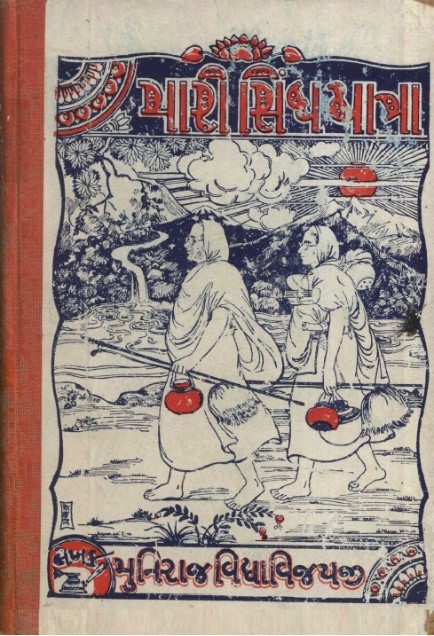
Jain religion was prosperous in Sindhdesh region. At one time there were 500 Jain temples in Sindhdesh

[Editor’s Note: This is 3rd Part of a series of articles based on a pre-partition book named “મારી સિંધ યાત્રા” (“منهنجي سنڌ جو سفر”) in Gujarati authored by Jain Sadhu Shri Vidyavijayji, narrating his experiences of travel and stay in Karachi for about 2 and half a years between 1937 and 1939. It would be advisable to click on introductory article and read for better understanding of the series. – Nasir Aijaz, Editor Sindh Courier]
Vimal Shah, Mumbai
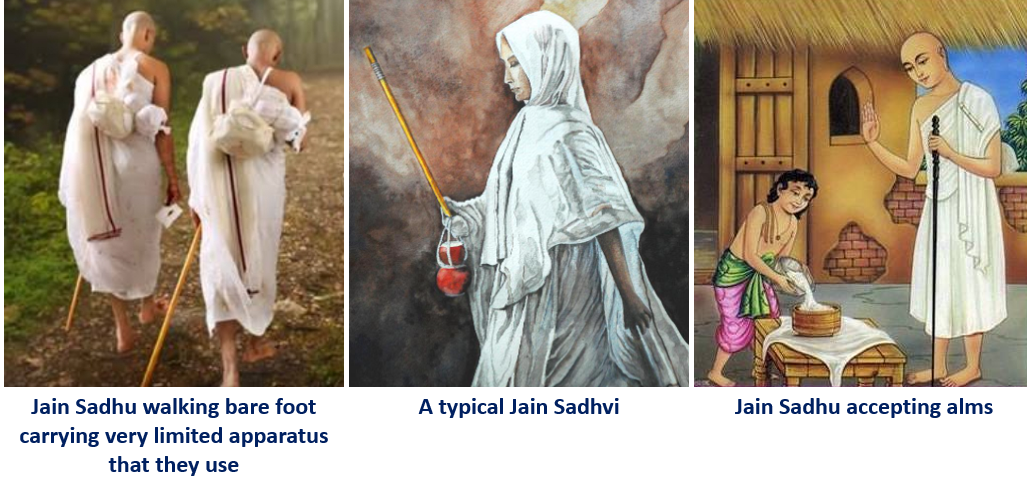 “The spread of Jainism is largely dependent on Jain sadhus. Despite observing the most difficult code of conduct like traveling bare foot, not riding on animals or vehicles, staying away from possessions, living by alms, restraining sensual pleasures, away from worldly temptations, accept whatever you get – good or bad, observe strict celibacy – in olden days Jain sadhus travelled to far off territories by crossing grim and terrible jungles, mountains, rivers, canals, and deserts. Sindhdesh – the introduction of which is already covered in the previous chapter (article) –Jain religion was prosperous in such a region. This soil was being sanctified by numerous Jain Acharyas. It is said that at one time there were 500 Jain temples in Sindhdesh. Even during the period of Muslim rule in this place, Jain sadhus came and impressed the kings with their conduct and character. It is proven from the history that many wealthy Jains had earned commendation for Jainism with their good deeds.”
“The spread of Jainism is largely dependent on Jain sadhus. Despite observing the most difficult code of conduct like traveling bare foot, not riding on animals or vehicles, staying away from possessions, living by alms, restraining sensual pleasures, away from worldly temptations, accept whatever you get – good or bad, observe strict celibacy – in olden days Jain sadhus travelled to far off territories by crossing grim and terrible jungles, mountains, rivers, canals, and deserts. Sindhdesh – the introduction of which is already covered in the previous chapter (article) –Jain religion was prosperous in such a region. This soil was being sanctified by numerous Jain Acharyas. It is said that at one time there were 500 Jain temples in Sindhdesh. Even during the period of Muslim rule in this place, Jain sadhus came and impressed the kings with their conduct and character. It is proven from the history that many wealthy Jains had earned commendation for Jainism with their good deeds.”
Ancient Jain Heritage
“Perhaps many people may not be aware that the origin of the famous ‘Godiji Parshvanath’ was – is in Sindh. About 25 miles from Nagarparkar and about 70 – 80 miles from Gadhara Road there’s a village named ‘Gori Mandir’.”
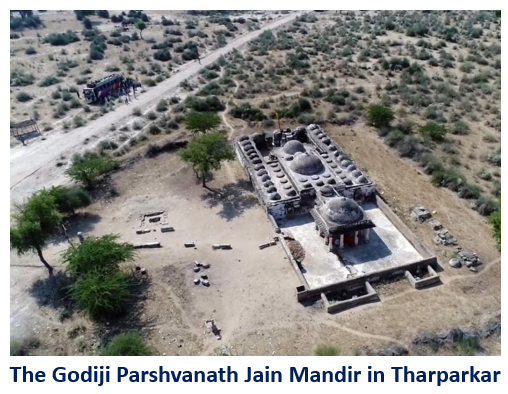 [Note by Vimal Shah: Parshvanath is the 23rd Jain Tirthankar. His temple at the Gori village is known as Gori jo Mandar by local people. The original word is ‘Godi’ but it is spelt as ‘Gori’ in English – like ‘Marwad’ is spelt as ‘Marwar’. Jains revere the image as “Godiji Parshvanath” – ‘ji’ is suffixed as a mark of respect. Several variations of “Godiji” – like Gori, Gorijo, Goricho, Godecho, Godejo are used by different writers. Out of ignorance or lack of knowledge of Jainism, some writers have also mistakenly associated a Guru named “Goricho” with Parshvanath. In fact, Tirthankars are Jagatguru (Self enlightened souls guiding all the living beings of the Universe), they never have any Guru in their life.]
[Note by Vimal Shah: Parshvanath is the 23rd Jain Tirthankar. His temple at the Gori village is known as Gori jo Mandar by local people. The original word is ‘Godi’ but it is spelt as ‘Gori’ in English – like ‘Marwad’ is spelt as ‘Marwar’. Jains revere the image as “Godiji Parshvanath” – ‘ji’ is suffixed as a mark of respect. Several variations of “Godiji” – like Gori, Gorijo, Goricho, Godecho, Godejo are used by different writers. Out of ignorance or lack of knowledge of Jainism, some writers have also mistakenly associated a Guru named “Goricho” with Parshvanath. In fact, Tirthankars are Jagatguru (Self enlightened souls guiding all the living beings of the Universe), they never have any Guru in their life.]
“In present times it has a population of only Bheels. There’s a magnificent Jain temple with Shikhar. There are no images. The temple is dilapidated. The government has got it repaired. About 20 years ago the assistant engineer of Nagarthatta, Shri Fattehchandji B. Idnani had personally visited the temple. And with the government order, had prepared budgetary estimates for the essential repairs and enhancements. There’s one tunnel near the temple. He had tried to enter the tunnel, but he refrained due to the fear instilled by the local Bheels. The stones of the boundary walls of the temple are affixed in the veranda and other parts of a government bungalow in Umarkot.
The origin of Godiji is said to be in Sindh in many ancient catalogues of Jain Tirth
There’s a narration found in a Stavan (a poetic composition in the praise of God) composed in the 17th century that – a Sangh (a Group of Pilgrims) had started for the pilgrimage of the Godiji Parshvanath from Surat. They had travelled via Ahmedabad, Abu, Sankheshwar, Radhanpur to Suigam, which is the last village on the border of Gujarat for going to Sindh. They had crossed the desert and gone towards Sindh but found it extremely difficult to travel further. So, they earnestly prayed Godiji. Godiji gave them darshan at that place. The Sangh camped there and celebrated for 4 days and then installed footprints of the Godiji under a ‘Peeludi’ tree (a common berries tree found in deserts) before returning to Radhanpur. This empty temple is in the possession of Jains and Jains of Nagarparkar have hired a local Bheel as caretaker.
Apart from this (narration in the Stavan), the origin of Godiji is said to be in Sindh in many ancient catalogues of Jain Tirth. Today image of Godiji Parshvanath is in several temples across India.”
[Note by Vimal Shah: Godiji Parshvanath has a special significance in the hearts of the Jain community settled across the world. There are more than 50 temples exclusively dedicated to Godiji Parshvanath, and countless images installed at various Jain temples across India and abroad.]
Once upon a time, Umarkot was prime center for Jains
“Once upon a time, Umarkot was prime center for Jains. Even today there’s one temple and about 15 Jain families there.
 Apart from these, two villages of the Nagarparkar taluka of the Tharparkar district are also ancient from Jain perspective – Bhoodesar (Bhodesar) and Parinagar. It is said that popular religious persons Meghosha and Kajalsha were living in Bhoodesar. Meghosha had brought the image of Parshvanath when he returned from Patan. Even today there are 3 ancient Jain temples (in Bhodesar) without any images under the possession of the government.
Apart from these, two villages of the Nagarparkar taluka of the Tharparkar district are also ancient from Jain perspective – Bhoodesar (Bhodesar) and Parinagar. It is said that popular religious persons Meghosha and Kajalsha were living in Bhoodesar. Meghosha had brought the image of Parshvanath when he returned from Patan. Even today there are 3 ancient Jain temples (in Bhodesar) without any images under the possession of the government.
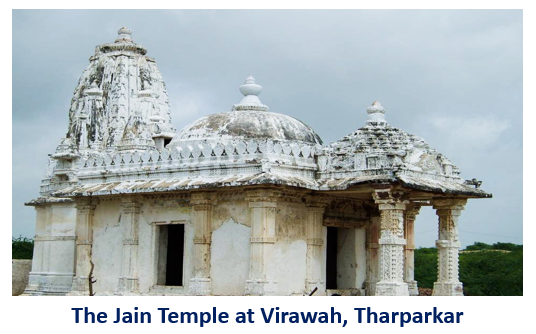 There are villages near Nagarparkar like – Virawah, Adigam, Churia, Berana, Vadai, where about 15 to 20 Jain families are living there. There are Jain temples in Nagarparkar and Virawah too. Moolji Bhawan Kuwadia in Nagarparkar and Jechand Chaturbhai in Adigam are the religious dignitaries in those villages. The dialects, eating habits, practices – everything of the people living in these villages are like Gujaratis. The language used for reading and writing is also Gujarati. Being close to Gujarat, they have more association with Gujarat. A few Jain sadhus do visit up to this region.
There are villages near Nagarparkar like – Virawah, Adigam, Churia, Berana, Vadai, where about 15 to 20 Jain families are living there. There are Jain temples in Nagarparkar and Virawah too. Moolji Bhawan Kuwadia in Nagarparkar and Jechand Chaturbhai in Adigam are the religious dignitaries in those villages. The dialects, eating habits, practices – everything of the people living in these villages are like Gujaratis. The language used for reading and writing is also Gujarati. Being close to Gujarat, they have more association with Gujarat. A few Jain sadhus do visit up to this region.
Many ancient images were found during the excavation at Kahu-jo-Daro near Mirpurkhas. It is said that a few of the images belong to Jain heritage.
The old Barmer and the new Barmer under the Marwar hukumat also had prosperous Jain community at a time. It can be seen from the temples and inscriptions there.
Apart from these, there are several other sites from where relics of Jain heritage are found.” (Continues – read Part-IV on Sunday April 23, 2023)
____________________
About the contributor of the series of Articles based on the book
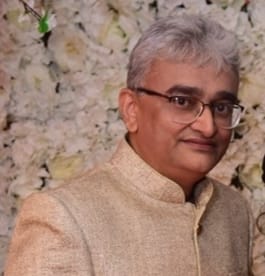 Vimal Shah is a follower of Jainism by birth and is based in Mumbai, India. He is a Computer Engineer and holds a Diploma in Jainology from Mumbai University. He has immense interest in reading, writing, studying, and teaching Jain Philosophical subjects. He conducts classroom as well as on-line sessions on Jain Philosophical courses. He has created several power point presentations with animation which he uses while teaching and has participated in several Jain Community events to present and explain the relevant subjects to the visiting audience. He has significantly contributed to the translation, reviewing, and editing of the set of books ‘Compendium of Jainism’ of JAINA, USA from English to Gujarati – an initiative of the JAINA India Foundation. He is also associated with a Project for the translation of Jain Aagams (Scriptures) from Gujarati to English and continues to study various subjects and remains a student of Jain Philosophy. He has a special interest in the history and preservation of the Jain Heritage in Pakistan, and is associated with the Jain Heritage Foundation, New Delhi.
Vimal Shah is a follower of Jainism by birth and is based in Mumbai, India. He is a Computer Engineer and holds a Diploma in Jainology from Mumbai University. He has immense interest in reading, writing, studying, and teaching Jain Philosophical subjects. He conducts classroom as well as on-line sessions on Jain Philosophical courses. He has created several power point presentations with animation which he uses while teaching and has participated in several Jain Community events to present and explain the relevant subjects to the visiting audience. He has significantly contributed to the translation, reviewing, and editing of the set of books ‘Compendium of Jainism’ of JAINA, USA from English to Gujarati – an initiative of the JAINA India Foundation. He is also associated with a Project for the translation of Jain Aagams (Scriptures) from Gujarati to English and continues to study various subjects and remains a student of Jain Philosophy. He has a special interest in the history and preservation of the Jain Heritage in Pakistan, and is associated with the Jain Heritage Foundation, New Delhi.
Click here for Part-I, Part-II